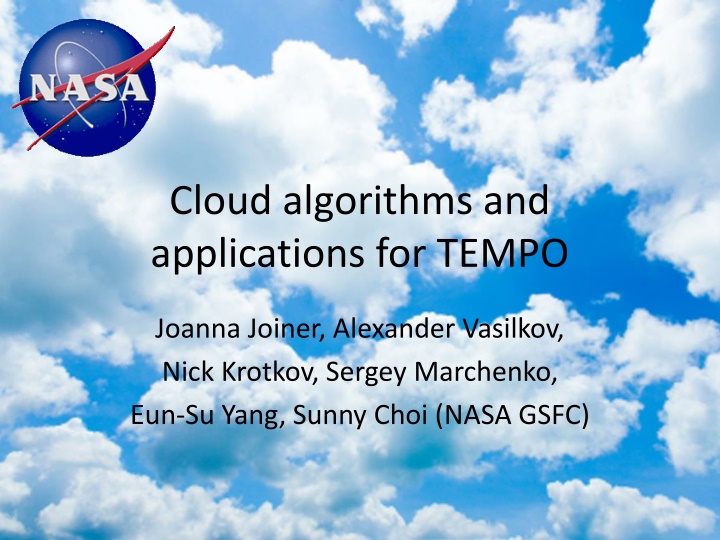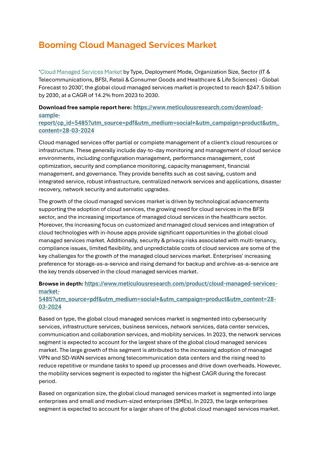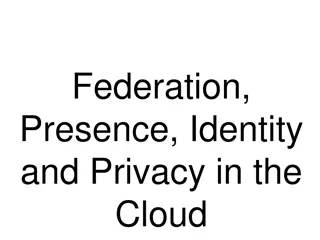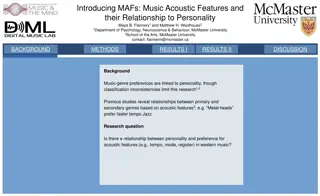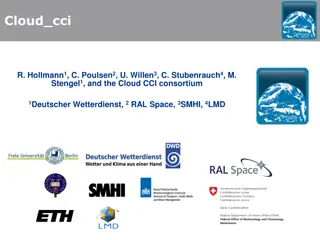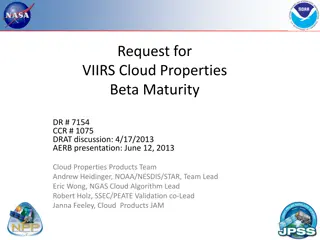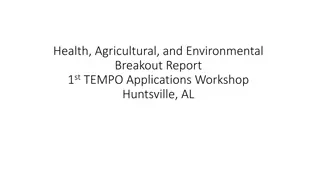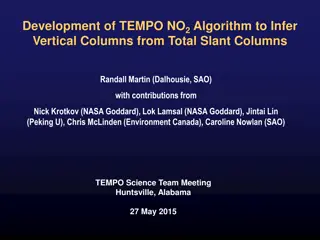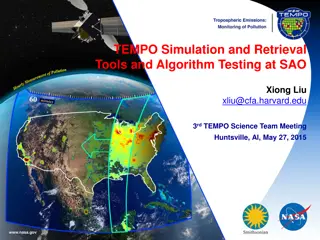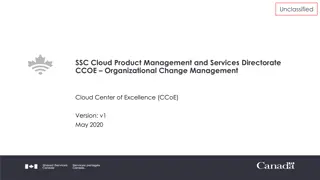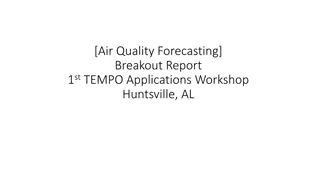Cloud Algorithms and Applications for TEMPO by Joanna Joiner et al.
Explore the cloud algorithms and applications for TEMPO, including the default baseline algorithm, OMI rotational-Raman algorithm, and other options like O2-O2. Learn about the validation with CloudSat, O2-O2 intercomparisons, and the implementation of tall poles for CLDRR applied to TEMPO. Discover the challenges and solutions in applying soft calibration for TEMPO and potential backup cloud algorithms.
Download Presentation

Please find below an Image/Link to download the presentation.
The content on the website is provided AS IS for your information and personal use only. It may not be sold, licensed, or shared on other websites without obtaining consent from the author.If you encounter any issues during the download, it is possible that the publisher has removed the file from their server.
You are allowed to download the files provided on this website for personal or commercial use, subject to the condition that they are used lawfully. All files are the property of their respective owners.
The content on the website is provided AS IS for your information and personal use only. It may not be sold, licensed, or shared on other websites without obtaining consent from the author.
E N D
Presentation Transcript
Cloud algorithms and applications for TEMPO Joanna Joiner, Alexander Vasilkov, Nick Krotkov, Sergey Marchenko, Eun-Su Yang, Sunny Choi (NASA GSFC)
TEMPO Clouds: cloud optical centroid pressure and effective cloud fraction Default baseline algorithm: OMI rotational-Raman algorithm (CLDRR) Fitting window currently 346-354 nm Mixed-Lambertian cloud model Validated with CloudSat, O2-O2 intercomparisons shown to improve O3 and SO2 retrievals Requires lookup table to be generated using a solar irradiance spectrum Soft calibration improves retrievals (striping) for OMI/OMPS, use data over Antarctica (will not have this luxury for TEMPO!) Sensitive to spectral errors (e.g., OMPS solar diffusor features and undersampling are issues; for OMI straylight an issue; solar variations a possible issue, currently not accounted for)) Applied to OMPS (Vasilkov et al., 2014, AMT); required changes to OMI code (spline interpolation; use of synthetic solar spectrum to generate tables) Some difference seen between OMI and OMPS that are currently not understood Added simple error estimates, errors go as 1/fr
TEMPO clouds: other options O2-O2 (~477 nm) Implemented by KNMI for OMI, ~P2 dependence, weak band (~1% signal) Validated with CloudSat, OMCLDRR intercomparisons New visible fitting at GSFC also fits this band, minor differences with KNMI fitting Potential backup cloud algorithm for TEMPO Currently implementing, testing F90 version, very fast, currently uses same surface reflectivity as KNMI, uses climatological temperature profiles (important!)
Tall poles for CLDRR applied to TEMPO Soft-calibration Significant striping seen in OMI (could be an issue for any cloud algorithm from similar instruments) How do we apply soft calibration for TEMPO? Using data over land did not work well for OMI (surface BRDF effects an issue?) use cloud climatology from OMI; identify areas of low cloud pressure variability (e.g., low marine clouds)? posterior correction to cloud OCPs?
First Global Free Tropospheric NO2 Concentrations Derived Using a Cloud Slicing Technique Applied to Satellite Observations from the Aura Ozone Monitoring Instrument (OMI) S. Choi1,2, J. Joiner2, Y. Choi3, B. N. Duncan2, E. Bucsela4 (Currently in AMTD) 1Science Systems and Applications, Inc. (SSAI), 2NASA Goddard Space Flight Center, 3University of Houston, 4SRI Interntaional These global maps show 3-month seasonal averages of free tropospheric NO2 mixing ratio (gridded at 6o latitude x 8o longitude resolution) for Dec-Feb (top panel) and Jun-Aug (bottom panel) 2005- 2007. These maps show clear signatures of anthropogenic contributions near densely populated regions as well as lightning contributions over tropical oceans. NASA GSFC Laboratory for Atmospheric Chemistry and Dynamics
Comparison of OMPS and OMI OMPS Cloud pressure retrievals of Jan 07, 2013 (ECF>0.05) Most cloud OCP patterns are same (northern Pacific, Mexico, northern Atlantic, northern China) OMI OCP retrievals are somewhat lower than OMPS particularly in the tropics OMI 8
Comparison of PDFs of cloud pressure, OMI O2-O2 added Southern mid-latitudes Northern mid-latitudes Tropics Differences between OMI RRS and OMPS cloud pressures appear to be similar to differences between OMI RRS and OMI O2-O2 except for the differences in the tropics. 9
